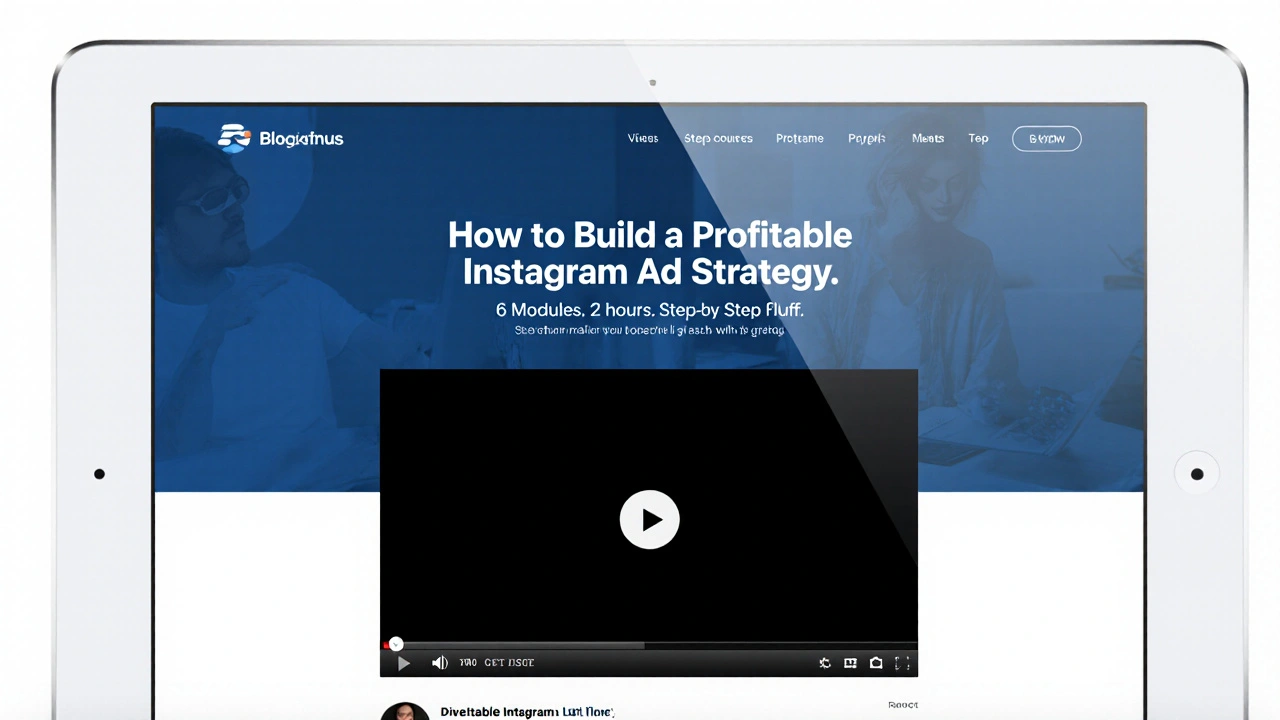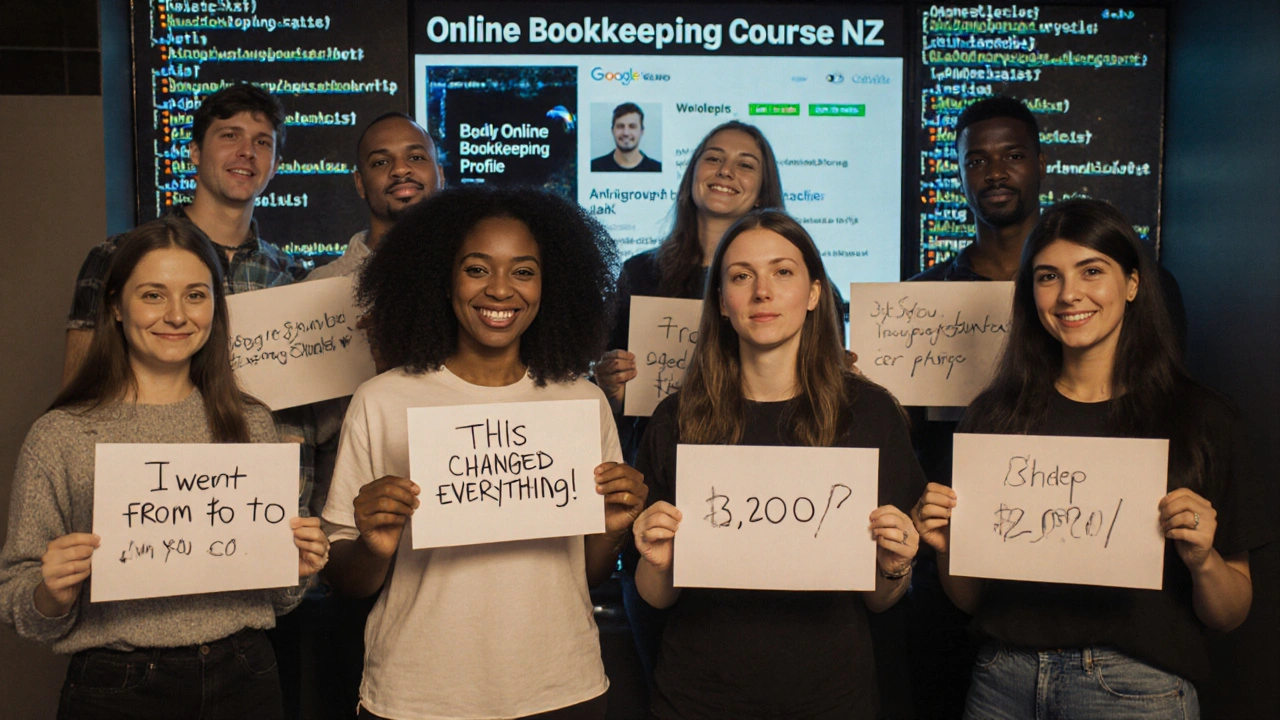If you’ve ever poured hours into building an online course-recording videos, designing quizzes, writing scripts-only to watch it sit untouched, you know the real challenge isn’t creating content. It’s getting people to find it.
Most online course creators think their product speaks for itself. It doesn’t. Without SEO, your course is invisible. No matter how good it is, if no one can find it on Google, it might as well not exist. The good news? SEO for online courses isn’t magic. It’s a series of clear, repeatable steps that work whether you’re selling a $20 micro-course or a $2,000 certification program.
Start with the right keywords
Forget guessing what people search for. Use real data. Tools like Google Keyword Planner, Ubersuggest, or even YouTube’s autocomplete will show you exactly what phrases learners are typing.
Don’t target broad terms like "online marketing course." Too competitive. Too vague. Instead, go narrow: "how to start a social media agency for beginners" or "Google Analytics certification for small business owners." These are called long-tail keywords. They have lower search volume but way higher intent. Someone searching that phrase already knows they need help-and they’re ready to buy.
Look for keywords with at least 50-500 monthly searches and low-to-medium competition. If you’re just starting, aim for keywords with under 30 competing pages on Google. That’s your sweet spot.
Map each keyword to a specific course. Don’t try to rank one course for ten different phrases. Pick one primary keyword per course and build everything around it.
Optimize your course landing page
Your landing page is your sales floor. If it’s cluttered, slow, or confusing, people leave-even if they found you through perfect SEO.
Start with the title tag. It should include your main keyword and feel human. Not "Best Online Course for Digital Marketing 2025," but "How to Build a Profitable Instagram Ad Strategy (Step-by-Step Guide)." The second one answers a question. People click on answers.
Use your keyword naturally in the first 100 words of your page. Then sprinkle it in H2 headings, image alt text, and the meta description. But don’t stuff it. Google punishes that.
Write your meta description like a sales pitch: What’s the outcome? How long will it take? What’s different here? Example: "Learn to run Instagram ads that convert-even if you’ve never spent a dollar on ads before. 6 modules. 2 hours. No fluff. Start today."
Speed matters. If your page takes more than 2.5 seconds to load, you’re losing half your visitors. Compress images. Use a lightweight theme. Avoid heavy plugins. Test your speed with PageSpeed Insights.
Structure your content for both people and search engines
Google doesn’t just read words. It reads structure. Use clear headings (H2, H3) to break your content into chunks. Each section should answer one question.
For example:
- H2: What You’ll Learn in This Course
- H3: How to Set Up Your First Instagram Ad Account
- H3: Which Tools Cost Less Than $10/Month
- H3: How to Track ROI Without a Big Budget
This format tells Google your page is organized and helpful. It also makes it easier for learners to skim and find what they need.
Include real examples. Not "some students saw results," but "Maria from Auckland went from 0 to $3,200/month in ad revenue in 8 weeks using these exact steps." Specific stories build trust. And trust drives conversions.

Use video and transcripts
Most online courses are video-based. That’s great-but Google can’t watch videos. It reads text.
Upload your videos to YouTube and embed them on your course page. YouTube is the second-largest search engine. You’re not just hosting content-you’re building a second discovery channel.
Then, add a full transcript below each video. Don’t just paste the auto-generated text. Edit it for clarity. Fix grammar. Add keywords naturally. A well-written transcript can rank for dozens of long-tail phrases your video never could.
Pro tip: Turn your transcript into a downloadable PDF guide. Offer it as a bonus when someone signs up. This builds your email list and gives Google more text to index.
Build backlinks the right way
Backlinks are votes of confidence from other websites. Google sees them as proof your course is valuable.
Don’t buy links. Don’t spam forums. Don’t exchange links with random blogs. That’s outdated-and risky.
Instead, find websites that already link to similar courses. Use Ahrefs or Moz to search: "link:yourcompetitor.com". See who’s linking to them. Then reach out.
Say something like: "Hi, I saw you linked to Sarah’s course on Facebook ads. I just launched a new course with updated strategies for 2025-especially for small businesses in New Zealand. Would you consider adding it as a resource? I’ve included a free module you can share with your readers."
Offer something useful. A free module. A case study. A checklist. Make it easy for them to say yes.
Also, write guest posts for education blogs, small business sites, or local business associations. Include your course link naturally in the bio or within the content. One high-quality link from a trusted site is worth 100 low-quality ones.
Encourage reviews and user-generated content
People trust other learners more than your sales page. Reviews aren’t just social proof-they’re SEO gold.
After someone completes your course, send a simple email: "Thanks for joining! Could you take 60 seconds to leave a quick review? It helps others find this course." Include a direct link to your course’s review section.
Ask for specific feedback: "What was the one thing that changed your results?" Then, use those exact quotes on your landing page. Google loves fresh, authentic content.
Also, create a student showcase page. Feature 3-5 students with their names, photos, results, and short video testimonials. This isn’t just marketing. It’s content that ranks.

Track what works-and fix what doesn’t
SEO isn’t a one-time setup. It’s a habit.
Use Google Search Console to see which keywords are bringing traffic to your course. Look for pages with impressions but low clicks. That means your title or meta description needs work.
Check your bounce rate in Google Analytics. If it’s over 70%, your page isn’t matching what people expect. Maybe your headline promised too much. Maybe the first video is too long. Fix it.
Update your content every 6-8 months. Add new tools. Replace outdated examples. Mention current trends. Google favors fresh content. A course updated in 2025 will rank higher than one from 2023-even if the core content is the same.
Don’t ignore local SEO
If your course targets a specific region-like Auckland, Wellington, or even New Zealand as a whole-local SEO matters.
Include your location in your keyword: "online bookkeeping course for New Zealand small businesses." Add your city to your meta description. Mention local regulations or tax rules if relevant.
Get listed on local business directories. Even if you’re online-only, claiming your Google Business Profile helps. Search "online course Auckland"-do you show up? If not, you’re missing out.
Also, ask local business groups, libraries, or chambers of commerce to link to your course. They’re trusted local sources. A link from them carries weight.
What to avoid
Here’s what doesn’t work:
- Buying traffic from Facebook ads without SEO-your course still won’t rank
- Using clickbait titles like "You Won’t BELIEVE This Trick!"-it hurts trust and long-term traffic
- Copying course descriptions from competitors-Google sees duplicate content as low quality
- Ignoring mobile users-over 60% of course searches happen on phones
- Thinking SEO is "set and forget"-it needs regular attention
SEO for online courses is slow at first. But after 4-6 months, traffic compounds. One well-optimized course can bring in hundreds of students a year-without paid ads.
Start with one course. Pick one keyword. Optimize one page. Track one metric. Do that right, and you’ll build momentum. Then repeat.
It’s not about being the loudest. It’s about being the most helpful. And when you’re helpful, Google rewards you. So does your audience.
How long does it take to see results from SEO for online courses?
Most people start seeing organic traffic in 3-4 months. If you’re targeting low-competition keywords and have a clean, fast website, you might see results in 6-8 weeks. But SEO is a long-term game. The real payoff comes after 6-12 months, when your course starts ranking for multiple keywords and brings in consistent traffic without paid ads.
Do I need to pay for SEO tools to rank my course?
No. You can start with free tools like Google Keyword Planner, Google Search Console, and Ubersuggest’s free plan. They give you enough data to find good keywords and track performance. Paid tools like Ahrefs or Semrush help if you’re scaling or managing multiple courses, but they’re not required to get started.
Can I rank for broad keywords like "online marketing course"?
It’s extremely difficult for new courses. Those terms are dominated by big platforms like Udemy, Coursera, and LinkedIn Learning. Instead, focus on long-tail keywords like "online marketing course for solopreneurs in New Zealand" or "how to run Facebook ads with no budget." These are easier to rank for and attract buyers with real intent.
Should I use YouTube to promote my course?
Yes. YouTube is the second-largest search engine. Upload free mini-lessons or behind-the-scenes clips from your course. Link to your landing page in the description. Many learners find courses through YouTube searches like "how to start a freelance design business"-even if they don’t know your name yet.
What’s the biggest mistake course creators make with SEO?
They treat SEO like a one-time task. They optimize the page once and never look at it again. SEO isn’t a checkbox. It’s a process. You need to update content, check rankings, respond to feedback, and adapt to new search trends. The course that gets updated regularly will always outrank the one that’s frozen in time.
Ready to start? Pick one course. Pick one keyword. Optimize one page. Do it now. Not tomorrow. Today.


Comments
sonny dirgantara
bro this is actually super helpful i just started my course last week and was about to give up till i read this
Jawaharlal Thota
Man, I’ve been in this game for over five years now, and let me tell you-this guide nails it. I used to think SEO was just about stuffing keywords until I lost half my traffic to Google’s Helpful Content Update. Then I started focusing on intent, like the post says-long-tail phrases, real student stories, transcripts for videos. I had a course on Python for accountants that was gathering dust until I optimized it for ‘how to automate excel reports with python for small business owners’-boom, 300 sign-ups in two months. And yeah, the transcript trick? Genius. I turned one of my video modules into a downloadable PDF checklist, and now it’s my top lead magnet. People share it. They tag me. I get backlinks from accounting blogs I never even contacted. SEO isn’t magic, but it’s also not just tech-it’s empathy. You’re not selling a course; you’re solving a specific, painful problem for someone who’s already searching for it. And if you’re not tracking your search console data every month? You’re flying blind. Update your examples, fix broken links, add new tools, mention current trends. Google rewards consistency, not just effort. I’ve got six courses now, all organic, all profitable, none of them with a single ad dollar spent. It takes time, but if you start with one, optimize one, track one-you’ll see momentum. Don’t overcomplicate it. Just be helpful. That’s the whole secret.
Lauren Saunders
How quaint. You’re treating SEO like some kind of productivity hack for solopreneurs. The real issue? Most online courses are fundamentally lazy content. You don’t ‘optimize’ your way out of a poorly designed curriculum. If your course can’t stand on its own without keyword gymnastics, it shouldn’t exist. And don’t get me started on YouTube-embedding videos doesn’t make your content valuable, it just makes it louder. Real authority comes from academic rigor, not ‘Maria from Auckland made $3,200.’ That’s not social proof-it’s clickbait dressed as a testimonial. Also, ‘low competition’ keywords? That’s just a euphemism for ‘low-value audiences.’ If you’re targeting ‘bookkeeping for New Zealand small businesses,’ you’re not building a brand-you’re farming niche desperation. SEO isn’t a strategy. It’s a symptom of a broken product model.
Andrew Nashaat
Okay first of all, you forgot to mention schema markup!!! Without structured data, you’re basically yelling into a void. And second, you said ‘use Google Keyword Planner’-but that’s been deprecated since 2022! You’re using the old version, which is basically useless now. You need Keyword Surfer or Ahrefs’ free version. And third-‘don’t stuff keywords’-but then you say ‘sprinkle it in H2s and alt text’-that’s keyword stuffing by another name! Also, ‘compress images’? Use WebP, not JPEG, and don’t forget lazy loading! And why no mention of Core Web Vitals? Your ‘2.5 second load time’ is outdated-Google now penalizes anything over 1.8 seconds. And transcripts? You need to mark them up with